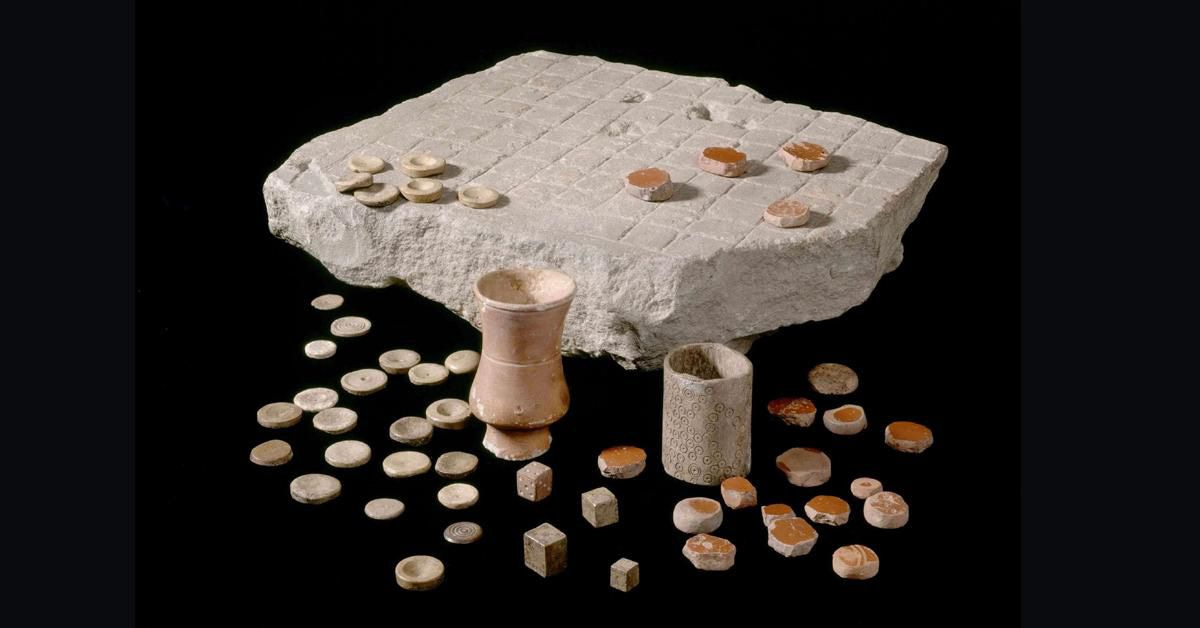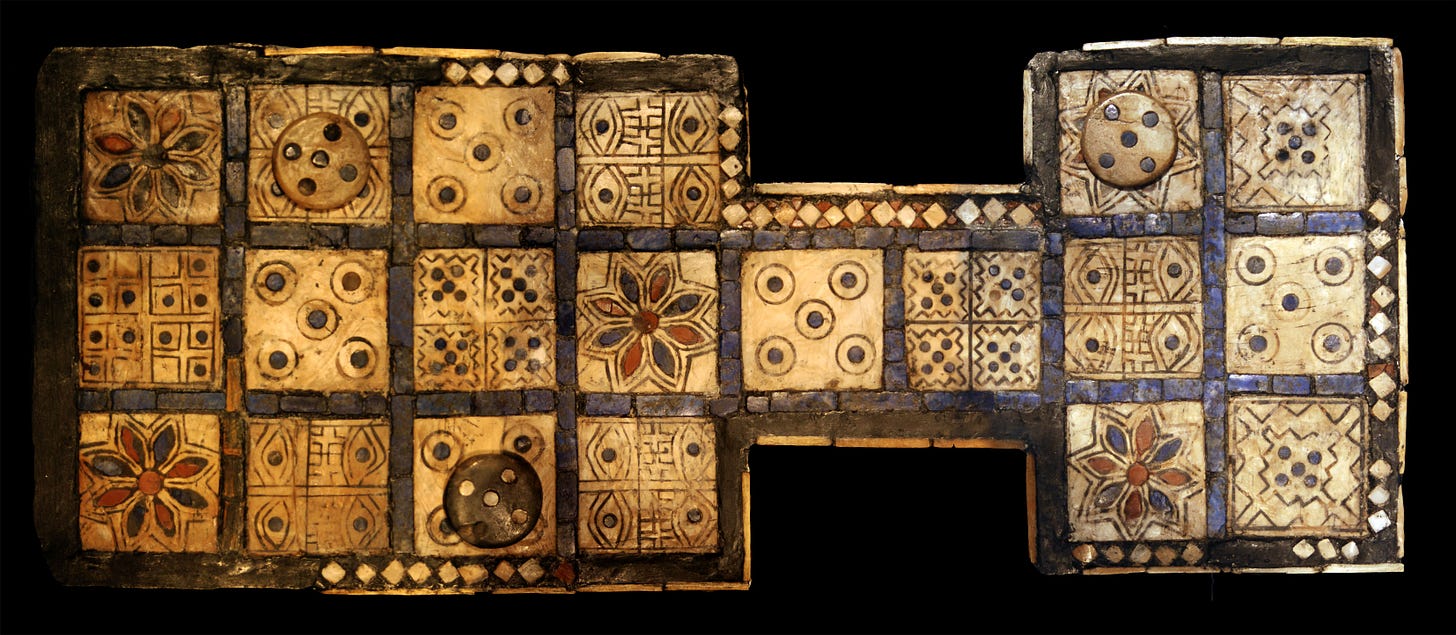3 Reasons why this 4600-year-old Mesopotamian Board Game is the most interesting thing you'll read about all week.
Most of us have played board games at some point in our lives. We usually start off with simple games like Snakes and Ladders or LUDO as kids. If the obsession continues we move on to Monopoly, Game of Life, etc. If you’re really obsessed and can afford it, games like Settlers of Catan, Pandemic, Ticket to Ride are increasingly popular. This obsession with board games however is not new.
In this article, we’ll read about the fascinating story of an ancient board game called the ‘Royal Game of Ur’. In many ways it’s similar to Parchisi / Ludo but this game was around and popular in the mediterranean for thousands of years. This is how the board looks:
The rules are quite straightforward - You roll some interesting dice and start on one side and then make your way all the way clockwise/anti-clockwise till you exit.
Here are the rules on exactly how to make it and play it - Link
Here are three reasons I found this so interesting!
Instruction Manuals are so old, there are cuneiform clay tablets with instructions and rules for ancient boardgames
The Royal Game of Ur was popular over 4600 years ago in Mesopotamia. Irving Finkel a historian at the British Museum discovered a clay tablet in the early 1980s that looked like it had instructions to a game of sorts.
“Written in 177 B.C., the tablet was the work of a Babylonian scribe copying from an earlier document. As Finkel translated the bewildering blend of Babylonian and Sumerian words, he began to realize it was a treatise on the Royal Game of Ur. The author speculated on the astronomical significance of the 12 squares at the center of the 20-square board and explained how certain squares portended good fortune: one square would bring "fine beer"; another would make a player "powerful like a lion."
See more in the video below (Skip to 2:40 if you want to see the actual game)
This was one of the first boardgames to go to international markets. ‘Scale & Globalization’ are not new terms by any means. And the ones who took it were adults! Not kids!
The game spread far beyond where it was created. There is evidence of it being found as far away as Sri Lanka. And this points to how crucial play and entertainment are to all of us!
Spread by traders, soldiers, missionaries and other pioneers of globalization, Ur caught on as far afield as Iran, Syria, Egypt, Lebanon, Sri Lanka, Cyprus and Crete. While religion has often been "transmitted by violence," says Finkel, games transcend borders because we share a craving for entertainment and competition. The Royal Game of Ur jumped classes, too. In the British Museum, there is a 2,700-year-old graffito version scratched onto a limestone gateway to a palace in Khorsabad, once the capital of Assyria. Carved with a sharp object like a dagger, this makeshift board would have been used by soldiers to distract themselves from the tedium of guard duty.
The game that had thought to be dead and gone, was found. In India.
The game had evolved and changed but it was unmistakeably a descendant of the Royal Game of Ur. It was found in the South Indian city of Cochin where it was known as a popular passtime for women and girls.
…he stumbled upon a remarkable photograph. Tucked away in an obscure journal published by a museum in Israel, it showed a scratched-up wooden board game that had belonged to a Jewish family in the Indian city of Cochin. Finkel collects Indian games, but he had never seen anything like this in India: the board had 20 squares — just like the Royal Game of Ur. He knew that Cochin had, until recent decades, a vibrant community of Jewish traders who came from Babylon more than 1,000 years ago. Was it possible that the game had stayed alive in this insular community, while elsewhere it had become extinct?
Staying Alive Most of Cochin's Jews had long since emigrated to Israel. Finkel has a sister who lives in Jerusalem, so he dispatched her to a kibbutz in the north where many of the Cochin Jews had settled. Finkel's sister went door to door with a drawing he'd done of the board until she found a retired schoolteacher in her 70s named Ruby Daniel, who remembered playing the game as a child in Cochin. Finkel flew to Israel, interviewed Daniel and played the game with her. She told him it was a popular pastime for women and girls when she was growing up, and that she had played it with her aunts on wooden boards, using cowrie shells for dice. By then, each player had 12 pieces, and the placement of the 20 squares had shifted slightly. But it was clearly the descendant of the game played in their ancestral homeland of Babylon 4,600 years ago.
You can play many variants and versions of the Royal Game of Ur online on your smartphones and computers! Try it out here - https://royalgameofuronline.com/
Try it out this weekend and let me know how it goes!
If you enjoyed reading this, do respond with any other interesting stories about play and playful learning from around the world?
Have a Playful Weekend,
Prasanth
Sources: http://content.time.com/time/specials/2007/article/0,28804,1815747_1815707_1815665,00.html
https://www.ancientworldmagazine.com/articles/royal-game-ur/






If you find the original rules challenging, consider looking for modern adaptations or simplified versions that retain the essence of the game while being more accessible.